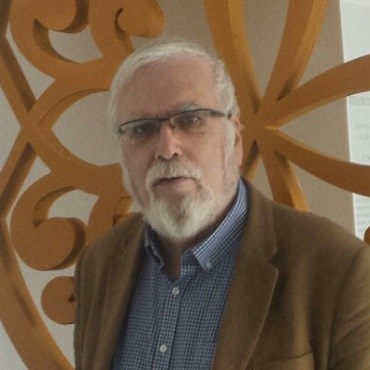
Biopolymer 2018

Theme: Synthesis and Characterization of Biopolymers & Polymer Sciences
Biopolymer Conference invites you to attend the "World Congress on Biopolymers and Bioplastics” conference going to be held on August 29-30, 2018 at Berlin, Germany. The main theme is “Synthesis and Characterization of Biopolymers and Polymer Sciences”.
Session 1: Natural polymer
Most of the natural polymers are formed from the condensation polymers and this formation from the monomers, water is obtained as a by-product. Cellulose, starch, lignin, chitin, and various polysaccharides are included in this group. These materials research and their outgrowth offer a wide range of properties and applications. Natural polymers are liable to be biodegradable, although the rate of degeneration is generally inversely proportional to the extent of chemical modification for Polymeric Materials. In natural polymers most are condensation polymers, and in their formation from monomers water is a by-product.
Related Conferences
7th World Congress on Biopolymers and Polymer Chemistry June 4-6, 2018, Osaka, Japan; Chemical Engineering Annual Congress 2018, Paris, France; 2nd International Conference on Renewable Energy and Resources August 27-28, 2018, Boston ,USA; 13th World Congress on Biofuels and Bioenergy September 04-06, 2018, Zurich, Switzerland; 5th World Congress on Chemical Engineering and Catalysis September 05-06, 2018,Tokyo, Japan;
Related Societies
Applied Chemical Engineering Society (ACES),Europe; American Chemical Society, USA; IAENG Society of Chemical Engineering, Asia-Pacific; Division of Polymer Physics, USA; European Federation of Chemical Engineering, Europe; ASME Bioprocessing Equipment, Asia-Pacific; American Chemical Society(ACS), USA; Australian Society of Biochemist, Asia-Pacific; American Physical Society Division of Polymer Physics (APSDPOLY);
Session 2: Biopolymers as materials
Polymer Nano composites (PNC) are made of a polymers or copolymers having nanoparticles or Nano fillers dispersed in the polymer matrix. The plastic used for food packaging and non-food applications is non-biodegradable, and also of valuable and scarce non-renewable resources like petroleum. With the current research on exploring the alternatives to petrol and priority on reduced environmental impact, research is increased in development of biodegradable packaging from biopolymer-based materials. A biomaterial is a surface, or construct that interacts with biological systems. These biomaterials are about fifty years old. The study of such materials is called biomaterials science. It has been seen a strong growth over its past period, were many companies have been investing large amounts in the development of new products. Biomaterials science is the elements of medicine, biology, chemistry, tissue engineering and materials science.
Related Conferences
7th World Congress on Biopolymers and Polymer Chemistry June 4-6, 2018, Osaka, Japan; Chemical Engineering Annual Congress 2018, Paris, France; 2nd International Conference on Renewable Energy and Resources August 27-28, 2018, Boston ,USA; 13th World Congress on Biofuels and Bioenergy September 04-06, 2018, Zurich, Switzerland; 5th World Congress on Chemical Engineering and Catalysis September 05-06, 2018,Tokyo, Japan;
Related Societies
Applied Chemical Engineering Society (ACES),Europe; American Chemical Society, USA; IAENG Society of Chemical Engineering, Asia-Pacific; Division of Polymer Physics, USA; European Federation of Chemical Engineering, Europe; ASME Bioprocessing Equipment, Asia-Pacific; American Chemical Society(ACS), USA; Australian Society of Biochemist, Asia-Pacific; American Physical Society Division of Polymer Physics (APSDPOLY);
Session 3: Bioplastics
A plastic materials is defined as Bioplastics. If it is either biobased, biodegradable or features both properties. In Bioplastics, some uses a microorganism to process base materials, such as oils, starch, cellulose, acids and alcohols. By using microorganisms we can made agricultural by-products and also from used plastic bottles and other containers. . Common plastics, such as fossil-fuel plastics are derived from petroleum or natural gas. . Production of such plastics tends to require more fossil fuels and to produce more greenhouse gases than the production of biobased polymers (bioplastics).Almost all Bioplastics produce less carbon dioxide in production, they are not necessarily completely green. There are so many bioplastics also release carbon dioxide and monoxide when biodegrading .Biodegradable plastics can break down in either anaerobic or aerobic, depends on the manufacturing.
Related Conferences
Related Conferences
7th World Congress on Biopolymers and Polymer Chemistry June 4-6, 2018, Osaka, Japan; Chemical Engineering Annual Congress 2018, Paris, France; 2nd International Conference on Renewable Energy and Resources August 27-28, 2018, Boston ,USA; 13th World Congress on Biofuels and Bioenergy September 04-06, 2018, Zurich, Switzerland; 5th World Congress on Chemical Engineering and Catalysis September 05-06, 2018,Tokyo, Japan;
Related Societies
Applied Chemical Engineering Society (ACES),Europe; American Chemical Society, USA; IAENG Society of Chemical Engineering, Asia-Pacific; Division of Polymer Physics, USA; European Federation of Chemical Engineering, Europe; ASME Bioprocessing Equipment, Asia-Pacific; American Chemical Society(ACS), USA; Australian Society of Biochemist, Asia-Pacific; American Physical Society Division of Polymer Physics (APSDPOLY);
Session 4: Nano polymers
Nano polymers are nothing but nanostructured polymers. The nanoparticles that can be used as building blocks to make a wide variety of material, such as super crystals or ionic liquid. The nanoparticles lack the ability to bond along specific directions -like atoms and molecules do-which means they are not easily joined together to make large structures like filaments or films. Because of nanoparticles are typically coated with a capping layer to prevent further growth or clustering. The nanostructure determines important modifications in the intrinsically properties. Multi scale Nano structuring and the resulting materials properties across the hierarchy of length scales from atomic, to mesoscopic, to macroscopic is an absolute necessity. The term polymer covers a large, vast group of molecules, including substances from proteins to high-strength Kevlar fibers. A key feature that distinguishes polymers from other large molecules is the recurrence of units of atoms in their chains. This occurs during polymerization, in which large number of monomers, polymer chains within a substance are often not of equal length.
Related Conferences
7th World Congress on Biopolymers and Polymer Chemistry June 4-6, 2018, Osaka, Japan; Chemical Engineering Annual Congress 2018, Paris, France; 2nd International Conference on Renewable Energy and Resources August 27-28, 2018, Boston ,USA; 13th World Congress on Biofuels and Bioenergy September 04-06, 2018, Zurich, Switzerland; 5th World Congress on Chemical Engineering and Catalysis September 05-06, 2018,Tokyo, Japan;
Related Societies
Applied Chemical Engineering Society (ACES),Europe; American Chemical Society, USA; IAENG Society of Chemical Engineering, Asia-Pacific; Division of Polymer Physics, USA; European Federation of Chemical Engineering, Europe; ASME Bioprocessing Equipment, Asia-Pacific; American Chemical Society(ACS), USA; Australian Society of Biochemist, Asia-Pacific; American Physical Society Division of Polymer Physics (APSDPOLY);
Session 5: Synthetic Polymers
Synthetic polymers are lightweight, hard to break, and last a long time. They are quite cheap to make and easy to form into shapes. One of the most common and versatile polymers is polyethylene. It is made from ethylene (also known as ethane) monomers. A synthetic polymer is a man-made macromolecule that is made of thousands of repeating units. Sometimes these polymers are straight-chained, like our paperclip chain example, and consist of one long chain of monomers bonded end to end. Sometimes polymers are both straight-chained and branched. This means that neighboring chains will bond with each other and make vast, net-like structures. This type of bonding between chains is called crosslinking. The technologies involved in the synthesis of the main classes of engineering high polymers used in such materials as plastics, fibers, rubbers, foams, adhesives and coatings. Besides the basic processes, this volume includes information on physical, chemical and mechanical characteristics - key factors with respect to obtaining the right end products. It also focuses on the main application of synthetic polymers in different engineering areas and gives data on production and consumption. Over 60 technological flowcharts are presented in a clear and concise manner, to provide the reader with essential information on relevant operations.
Related Conferences
7th World Congress on Biopolymers and Polymer Chemistry June 4-6, 2018, Osaka, Japan; Chemical Engineering Annual Congress 2018, Paris, France; 2nd International Conference on Renewable Energy and Resources August 27-28, 2018, Boston ,USA; 13th World Congress on Biofuels and Bioenergy September 04-06, 2018, Zurich, Switzerland; 5th World Congress on Chemical Engineering and Catalysis September 05-06, 2018,Tokyo, Japan;
Related Societies
Applied Chemical Engineering Society (ACES),Europe; American Chemical Society, USA; IAENG Society of Chemical Engineering, Asia-Pacific; Division of Polymer Physics, USA; European Federation of Chemical Engineering, Europe; ASME Bioprocessing Equipment, Asia-Pacific; American Chemical Society(ACS), USA; Australian Society of Biochemist, Asia-Pacific; American Physical Society Division of Polymer Physics (APSDPOLY);
Session 6: Biopolymers in Biofibres & Microbial Cellulose
Cellulose is the most generous substance on the earth, synthesized by plants, algae and also some species of bacteria and microorganisms. The Plant derivative cellulose and Black Carbon (BC) have the same chemical composition but differ in structure and physical properties. The BC network structure comprises cellulose Nano fibrils 3-8 nm in diameter, and the crystalline regions are been the normal cellulose I. The properties such as the Nano metric structure, unique physical and mechanical properties together produce higher purity that lead to great number of commercial products. Lignocellulosic agricultural byproducts are an extensive and cheap source for cellulose fibers. Agro-based biofibers have the architecture, properties and design that make them suitable for use as composite, textile, pulp and paper manufacture. In addition, biofibers can be used to produce biofuel, chemicals, enzymes and food.
Related Conferences
7th World Congress on Biopolymers and Polymer Chemistry June 4-6, 2018, Osaka, Japan; Chemical Engineering Annual Congress 2018, Paris, France; 2nd International Conference on Renewable Energy and Resources August 27-28, 2018, Boston ,USA; 13th World Congress on Biofuels and Bioenergy September 04-06, 2018, Zurich, Switzerland; 5th World Congress on Chemical Engineering and Catalysis September 05-06, 2018,Tokyo, Japan;
Related Societies
Applied Chemical Engineering Society (ACES),Europe; American Chemical Society, USA; IAENG Society of Chemical Engineering, Asia-Pacific; Division of Polymer Physics, USA; European Federation of Chemical Engineering, Europe; ASME Bioprocessing Equipment, Asia-Pacific; American Chemical Society(ACS), USA; Australian Society of Biochemist, Asia-Pacific; American Physical Society Division of Polymer Physics (APSDPOLY);
Session 7: Principles of Polymer Chemistry
This session contents a how smaller molecules combined and formed a useful material with specific characteristics by manipulating the molecular structure of the monomers/polymers used. And different polymerization technics. This session represents the Physical Properties and Physical Chemistry of Polymers, Polymerization technics, Polymeric Materials for Special Applications. Thermoplastic materials segment is expected to witness the highest growth over the next ten years. Increasing applications of engineered plastics in various fields, such as construction, automotive, and industrial manufacturing equipment to mechanical engineering is expected to drive this market.
Related Conferences
7th World Congress on Biopolymers and Polymer Chemistry June 4-6, 2018, Osaka, Japan; Chemical Engineering Annual Congress 2018, Paris, France; 2nd International Conference on Renewable Energy and Resources August 27-28, 2018, Boston ,USA; 13th World Congress on Biofuels and Bioenergy September 04-06, 2018, Zurich, Switzerland; 5th World Congress on Chemical Engineering and Catalysis September 05-06, 2018,Tokyo, Japan;
Related Societies
Applied Chemical Engineering Society (ACES),Europe; American Chemical Society, USA; IAENG Society of Chemical Engineering, Asia-Pacific; Division of Polymer Physics, USA; European Federation of Chemical Engineering, Europe; ASME Bioprocessing Equipment, Asia-Pacific; American Chemical Society(ACS), USA; Australian Society of Biochemist, Asia-Pacific; American Physical Society Division of Polymer Physics (APSDPOLY);
Session 8: Recycling & Waste Management of Biopolymers
Bio based polymers lead not only on the raw materials side but also on the other side through certain promising end-of-life (EOL) options. Exclusively waste disposal with energy recovery has an added advantage, which lies in benefiting carbon neutral energy while allowing multiple uses of possible recycling. The recent commission after research said that all of the composts contain biodegradable polymers materials could be classified using a risk assessment system at a higher toxicity position. Biodegradable polymers waste can serve for aerobic degradation, composting, or anaerobic digestion.
Related Conferences
7th World Congress on Biopolymers and Polymer Chemistry June 4-6, 2018, Osaka, Japan; Chemical Engineering Annual Congress 2018, Paris, France; 2nd International Conference on Renewable Energy and Resources August 27-28, 2018, Boston ,USA; 13th World Congress on Biofuels and Bioenergy September 04-06, 2018, Zurich, Switzerland; 5th World Congress on Chemical Engineering and Catalysis September 05-06, 2018,Tokyo, Japan;
Related Societies
Applied Chemical Engineering Society (ACES),Europe; American Chemical Society, USA; IAENG Society of Chemical Engineering, Asia-Pacific; Division of Polymer Physics, USA; European Federation of Chemical Engineering, Europe; ASME Bioprocessing Equipment, Asia-Pacific; American Chemical Society(ACS), USA; Australian Society of Biochemist, Asia-Pacific; American Physical Society Division of Polymer Physics (APSDPOLY);
Session 9: Production and Commercialization
In its recently published study, Markets and Markets is a market research company and consulting firm based in the U.S. We publish strategically analyzed market reports and serve as a business intelligence partner to Fortune 500 companies across the world. Markets and Markets also provide multi-client reports, company profiles and custom research services. Markets and Markets covers thirteen industry verticals, includes advanced materials, automotive and transportation, banking and financial services, biotechnology, chemicals, energy and power, food and beverages, medical devices, pharmaceuticals, semiconductor and electronics, telecommunications and IT. We at Markets and Markets are inspired to help our clients grow by providing apt business insight with our vast market intelligence repository.
Related Conferences
7th World Congress on Biopolymers and Polymer Chemistry June 4-6, 2018, Osaka, Japan; Chemical Engineering Annual Congress 2018, Paris, France; 2nd International Conference on Renewable Energy and Resources August 27-28, 2018, Boston ,USA; 13th World Congress on Biofuels and Bioenergy September 04-06, 2018, Zurich, Switzerland; 5th World Congress on Chemical Engineering and Catalysis September 05-06, 2018,Tokyo, Japan;
Related Societies
Applied Chemical Engineering Society (ACES),Europe; American Chemical Society, USA; IAENG Society of Chemical Engineering, Asia-Pacific; Division of Polymer Physics, USA; European Federation of Chemical Engineering, Europe; ASME Bioprocessing Equipment, Asia-Pacific; American Chemical Society(ACS), USA; Australian Society of Biochemist, Asia-Pacific; American Physical Society Division of Polymer Physics (APSDPOLY);
Session 10: Routes to drop-in monomers and bioplastics
An emerging trend is the advancement of monomers from renewable carbon that are identical to those that currently produced from petroleum-derived raw material. Examples include diols (e.g. 1,3-propenediol, 1,4-butanediol), diacids (e.g. succinic and adipic acids), terephthalic acid and acrylic acid (C3H4O2). The attraction to this approach is that ‘drop in’ biobased products have well-established markets such that, if they can be produced at equivalent cost and quality, they will be adopted by producers. Drop in biobased monomers to authorize the yield of biobased drop-in polymers such as PBS (poly butylene succinate), PTT (poly trimethylene terephthalate), polyethylene (PE), polypropylene (PP), polyethylene terephthalate (PET) and biobased polyamides.
Related Conferences
7th World Congress on Biopolymers and Polymer Chemistry June 4-6, 2018, Osaka, Japan; Chemical Engineering Annual Congress 2018, Paris, France; 2nd International Conference on Renewable Energy and Resources August 27-28, 2018, Boston ,USA; 13th World Congress on Biofuels and Bioenergy September 04-06, 2018, Zurich, Switzerland; 5th World Congress on Chemical Engineering and Catalysis September 05-06, 2018,Tokyo, Japan;
Related Societies
Applied Chemical Engineering Society (ACES),Europe; American Chemical Society, USA; IAENG Society of Chemical Engineering, Asia-Pacific; Division of Polymer Physics, USA; European Federation of Chemical Engineering, Europe; ASME Bioprocessing Equipment, Asia-Pacific; American Chemical Society(ACS), USA; Australian Society of Biochemist, Asia-Pacific; American Physical Society Division of Polymer Physics (APSDPOLY);
Session 11: Future and Scope for Biopolymers and Bioplastics
In search of novel Advanced Materials solutions and keeping an eye on the goal of sustainable production and consumption, Bioplastics have several (potential) benefits. The use of renewable resources to produce bioplastics the key for increasing resource productivity, the resources can be cultivated on an (at least) annual basis, the principle of cascade use, as biomass can primarily be used for materials and then for energy generation, a reduction of the carbon footprint and GHG egressions of some materials and products-saving fossil fuels in many resources, and for substituting them step by step. Biobased polymeric materials are closer to the reality of replacing conventional polymers than ever before. The bioplastics are about fifty year old, at present days, biobased polymers are commonly found in many applications from commodity to hi-tech applications due to advancement in biotechnology and public awareness.
Related Conferences
7th World Congress on Biopolymers and Polymer Chemistry June 4-6, 2018, Osaka, Japan; Chemical Engineering Annual Congress 2018, Paris, France; 2nd International Conference on Renewable Energy and Resources August 27-28, 2018, Boston ,USA; 13th World Congress on Biofuels and Bioenergy September 04-06, 2018, Zurich, Switzerland; 5th World Congress on Chemical Engineering and Catalysis September 05-06, 2018,Tokyo, Japan;
Related Societies
Applied Chemical Engineering Society (ACES),Europe; American Chemical Society, USA; IAENG Society of Chemical Engineering, Asia-Pacific; Division of Polymer Physics, USA; European Federation of Chemical Engineering, Europe; ASME Bioprocessing Equipment, Asia-Pacific; American Chemical Society(ACS), USA; Australian Society of Biochemist, Asia-Pacific; American Physical Society Division of Polymer Physics (APSDPOLY);
Importance & Scope:
Over the past few years, global economic activities have increased a lot. This tremendous growth has raised serious problems about current important patterns of production and consumption. As the current society has increased its attention in understanding of the environmental aspects and its industrial practices, greater attention has been given to the concept of sustainable economic systems that rely on energy from undepletable source and materials. The use of biologically derived Polymers become as an important component of this global world .The history of Biopolymer is not a long one. Various reasons are associated with the research and development of Biopolymers. Advanced Bioplastics will make a tremendous change and will help rid of the conventional plastics, which is a welcome change. Biopolymers In contrast, the feedstock for polymers derived from petrochemicals will eventually deplete. There are so many bioplastics also release carbon dioxide and monoxide when biodegrading .Biodegradable plastics can break down in either anaerobic or aerobic, depends on the manufacturing.
Why Germany?
Berlin is the capital of Germany; it is the largest city as well as one of its 16 constituent states. It has a population of 3.7 million. In the terms of population, Berlin is the Second most populous city in the European Union and the seventh most populous urban area in the European Union.
Berlin is rich in history, Culture and Science. Berlin is a worldwide city of culture, governmental issues, media and science. Its economy depends on cutting edge firms and the administration part, including a different scope of inventive enterprises; investigate offices, media companies and tradition scenes. Berlin fills in as a mainland center point for air and rail activity and has a very mind boggling open transportation arrange. The city is a mainstream traveler destination. Significant businesses likewise incorporate IT, pharmaceuticals, biomedical designing, clean tech, biotechnology, development and hardware. Berlin has been one of Europe’s most influential economic, cultural and political centers – for better or worse – since it’s origins as a trading post in the 13th century.
Why to attend?
“World Congress on Biopolymers 2018” is an event delivering on the concept in the field of Bio materials, Polymer Science and chemical engineering, world across the globe. By providing collaboration spaces and break-out rooms with tea and lunch for delegates between sessions with invaluable networking time for you. It tooks delegates to have issues addressed on Bio materials by recognized global experts who are up to date with the latest developments in the Bio materials field and provide information on new techniques and technologies. This International Biopolymer Materials conference will feature renowned keynote speakers, plenary speeches, young research forum, poster presentations, technical workshops and career guidance sessions.
Market Research on Biopolymers
Extensive research carried out by the analysts at Technavio has shown that the global biopolymers market will witness impressive growth at a staggering CAGR of close to 17% during the forecast period. One of the primary factors driving this market’s growth is the increasing demand for eco-friendly packaging among consumers. This has impelled plastic manufacturers and packaging vendors to shift focus toward biopolymer packaging. Moreover, stringent government regulations regarding the use of plastic are also forcing vendors to focus on manufacturing biopolymers and consume more green packaging labels as a strategy for branding and customer acquisition over the next four years.
Market Research in European Region:
In the last years the biobased chemical industry is characterized by a strong growth. Many innovative products and materials like biopolymers have been developed. Europe’s demand for biopolymers is among the largest of the world and exceeds the domestic supply. Main sources for biopolymers are agroforestry residues. Therefore, biogenic renewable raw materials are the basic materials for a future oriented bioeconomy. Due to their arisings, wheat straw, maize stover and bark from coniferous and broadleaf are of special interest for establishing a bioeconomy in Europe. To get an understanding of available biomass amounts, competitive utilizations like straw as soil conditioner, as resource for livestock farming or the use for energetic purposes have to be evaluated. Besides this, any competition to the food production has to be avoided. For the design of industrial processes, a detailed knowledge concerning the supply potential of different sources of agroforestry residues is needed. This covers the quantification of arisings of various sources of agroforestry waste as well as their regional distribution.
Methodologically, the analysis of the raw material potential is based on a detailed evaluation of EUROSTAT and FAO databases combined with a state-of-the-art literature review. In a second step, a material flow analysis is applied to assess and structure contemporary concepts of residue management with a presentation of competitive applications and their contribution to existing life cycles. For the design of a sustainable bioeconomy, potential variations of future arisings have to be evaluated. Therefore, a quantitative approach based on statistical methods like regression analysis is applied.
Market Research in American region:
North America is the largest market for biopolymers globally and USA is the leading country in biopolymers majorly owing to the rising demand from end-user industries such as bottles, fibers, and automotive. They consume almost close to one-third of the global demand. Moreover, the rising demand from the deeply penetrating industries such as automotive and pharmaceutical will open up huge opportunities in the North American biopolymers market. Packaging segment projected to witness highest CAGR in the market during the forecast period. The global market is projected to witness a CAGR of 12.0% from 2016 to reach a market size of USD 5.08 Billion by 2021.
Market Research in Asia-Pacific region:
The industry report analyzes the market of Biobased chemical industry is characterized a strong growth. Many innovative products and materials like biopolymers have been developed. Asia-Pacific region the demand for biopolymers among the largest of the world and exceeds the domestic supply. Main sources for biopolymers are agroforestry residues. The industry report that the increase of 20% (Approx) in the production of Biopolymers per year .The biomaterials market is poised to reach USD 130.57 Billion by 2020, growing at a CAGR of 16% during the forecast period of 2015 to 2020. The biomaterials market is expected to witness the highest growth rate in the Asia-Pacific region, with emphasis on India, China, and Japan. The high growth in India and China can be attributed to rising cosmetic and plastic surgeries in India, lucrative medical device industry and new tax policy in China, growing number of cardiovascular diseases and increasing aging population in China.
Major Associations around the Globe:
· Applied Chemical Engineering Society(ACES),Europe
· American Chemical Society, USA
· European Federation of Chemical Engineering ,Europe
· Australian Society of Biochemistry, Asia -Pacific
· British Plastics Federation
· American Physical Society Division of Polymer Physics(APSDPOLY)
· ASME Bioprocessing Equipment ,Asia Pacific
· Belgian Polymer Group (BPG)
· Bioenvironmental Federation Society
· Brazilian Polymer Association
· European Council for Plasticizers and Intermediates
· American Coating Association
Top Universities in Germany
· Free University of Berlin
· Technical University of Munich
· University of Munich
· Rheinisch-Westfälische Technical University of Aachen
· University of Heidelberg
· Technical University Berlin
· Karlsruher Institute for Technology
· Humboldt University of Berlin
· University of Hamburg
· University of Bonn
Major Biomaterials Associations in Germany
· Institute of Biomaterial Science – HZG
· German Society for Biomaterials
· Berlin-Brandenburg Center for Regenerative Therapies
· BIOMAT association
· Institute of Biomaterials (WW7)
· European materials, minerals & mining organization
Conclusion:
Global economic activities have increased a lot. This tremendous growth has raised serious problems about current important patterns of production and consumption. As the current society has increased its attention in understanding of the environmental aspects and its industrial practices, greater attention has been given to the concept of sustainable economic systems that rely on energy from undepletable source and materials.Various reasons are associated with the research and development of Biopolymers. Advantage of Bioplastics will make a tremendous change and will help rid of the conventional plastics, which is a welcome change.
References
https://www.marketsandmarkets.com/Market-Reports/biopolymers-bioplastics-market
https://www.gmiresearch.com/report/bioplastic-biopolymers-market.html
https://www.sigmaaldrich.com/materials-science/biomaterials.html
- Natural polymer
- Biopolymers as materials
- Bioplastics
- Nano polymers
- Synthetic Polymers
- Biopolymers in Biofibres & Microbial Cellulose
- Principles of Polymer Chemistry
- Recycling & Waste Management of Biopolymers
- Production and Commercialization
- Routes to drop-in monomers and bioplastics
- Future and Scope for Biopolymers and Bioplastics
- Journal of Chemistry and Applied Chemical Engineering
- Journal of Biochemical Engineering & Process Technology
13 Organizing Committee Members
7 Renowned Speakers
Kabasci Stephan
Head of the Department,Fraunhofer UMSICHT
Germany
Karin Larsson
Professor
Sweden
Wolfgang Baltus
CEO, Wobalt Expedition Consultancy
Thailand
Geoffrey Mitchell
Vice-Director
Portugal
Amar Mohanty
Director, University of Guelph, Canada
Canada
Manjusri Misra
University of Guelph
Canada
Aman Ullah
University of Alberta
Canada













































































































































